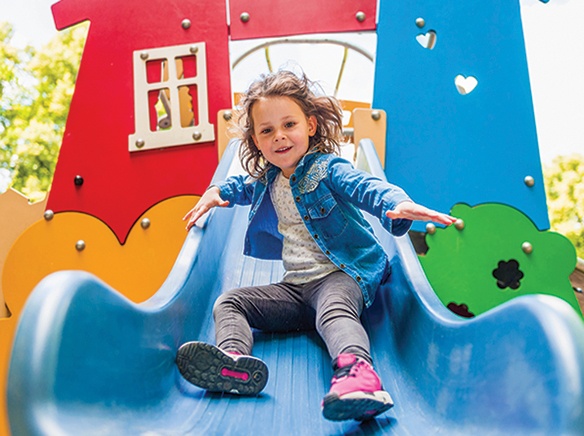Park playground equipment and swing set apparatuses in backyard jungle gyms are exciting places for children to be active outdoors. Play equipment gives children opportunities to exercise and engage with friends.
Despite all the benefits of playing outside on playground equipment, many youngsters get hurt on playgrounds every year. The American Academy of Orthopaedic Surgeons says each year more than 220,000 children under age 14 are treated in hospital emergency rooms across the United States for playground-related injuries. The Canadian Public Health Association reports that 1,841 children in Canada under the age of 18 required hospitalization between the years of 2014 and 2015.
The same organization says fractures are the most common playground injury, followed by contusions/abrasions and lacerations. The Centers for Disease Control and Prevention adds that playgrounds present an elevated risk for internal injuries, concussions, dislocations, and amputations. Children also may suffocate if hooded sweatshirt drawstrings get tangled.
All children are at risk for injuries, but statistics indicate girls sustain injuries slightly more often than boys. Children between the ages of five and nine have higher rates of emergency department visits for these types of injuries, according to the CDC.
Preventing injuries comes down to a few simple strategies.
- Supervision: A responsible adult can be the most important factor in preventing or minimizing playground injuries. Supervising play means enforcing rules and monitoring risky antics.
- Ground material: The type of surface on the play area can reduce severity of injuries from falls. Softer surfaces, such as mulch, wood chips, shredded rubber, or sand reduce impact injuries. Equipment in yards should be surrounded by soft materials. Parents can rally to ensure school and neighborhood playgrounds employ similar materials.
- Age appropriateness: Children should be guided to equipment designed for their ages. Equipment is typically rated for various age groups.
- Maintenance: Remove tripping hazards and verify that the equipment is in good working order before allowing children to play. Avoid or replace equipment that has openings that could ensnare a child’s head.
- Clothing: Children should dress appropriately for playground use. That means slip-resistant soles on shoes and well-fitting clothing and avoidance of clothing that can become tangled or get caught on structures.
Playgrounds are enjoyable places for children to congregate and spend hours outdoors. Prioritize playground safety at home or in the neighborhood to reduce the risk of injury for youngsters.












